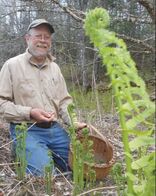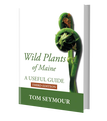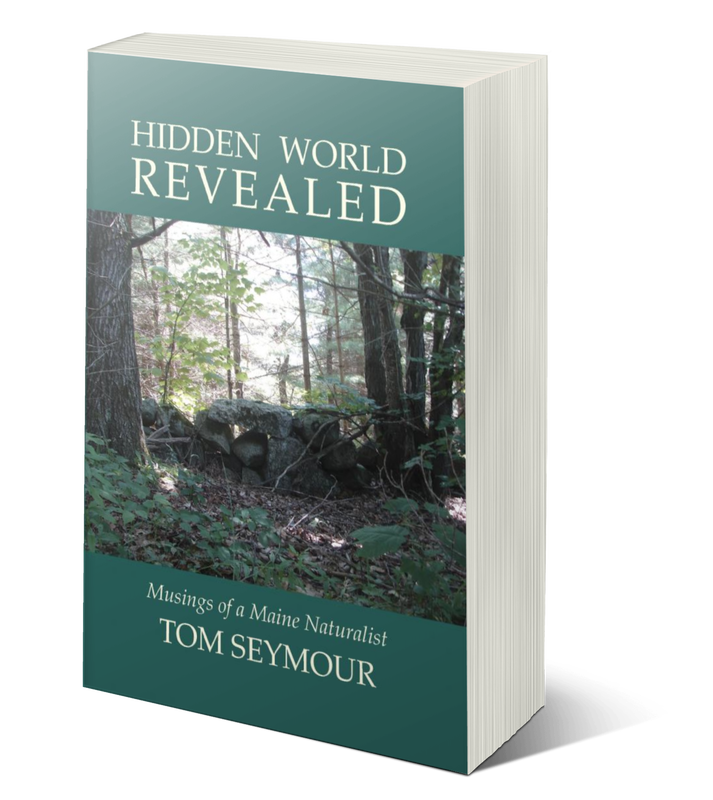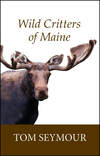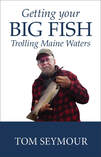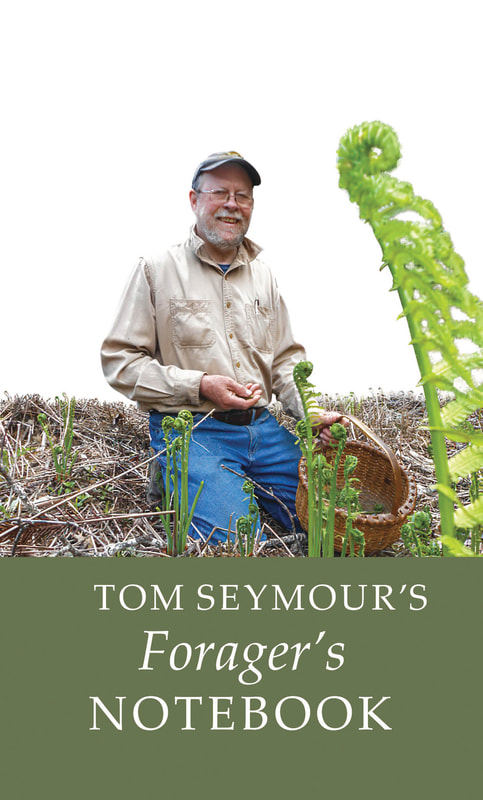My seminar consisted of a Friday night slide show and discussion, complete with specimens that I had brought from home. This was followed by a field trip on Saturday morning. I spent much of Friday driving around and walking through potential sites. And as expected, the best place I found was not out in the wilds of northern Maine, but rather on property owned by the Maine Department of Inland Fisheries and Wildlife (DIF&W), in downtown Greenville. Here, the ground had recently been bulldozed, allowing for a host of wild plants to self-seed. Also, a seasonal stream flowed through the site, adding more edible plant habitat. On that one site, we found winter cress (a mustard-like plant with delicious, broccoli-like flower buds), jewelweed, wild mint, wild evening primrose (we dug some of the edible roots), dandelions and red dock. Several other plants of interest grew there as well, mostly wildflowers. After leaving the DIF&W site, we headed for Little Moose Township, in the big woods. Here, except for where loggers had constructed tote roads, there were no wild edibles. But along the roads, where the sun shone bright, and just inside the woods where there was dappled sunlight, we found enough edible plants to make our trip interesting. The contrast between these two sites proved my point wonderfully. Nothing much except trees and mosses grow in dark, thick woods. Add the human element, with roads, woodyards and so forth, and plants suddenly find a place to take hold. So in this instance, anyway, we humans are not the problem. We are the enablers.
0 Comments
Leave a Reply. |
AuthorAn avid writer and naturalist, Tom writes four regular columns and a multitude of features. He wrote a long running award winning column "Waldo County Outdoors" and a garden column for Courier Publications Archives
November 2020
Categories |
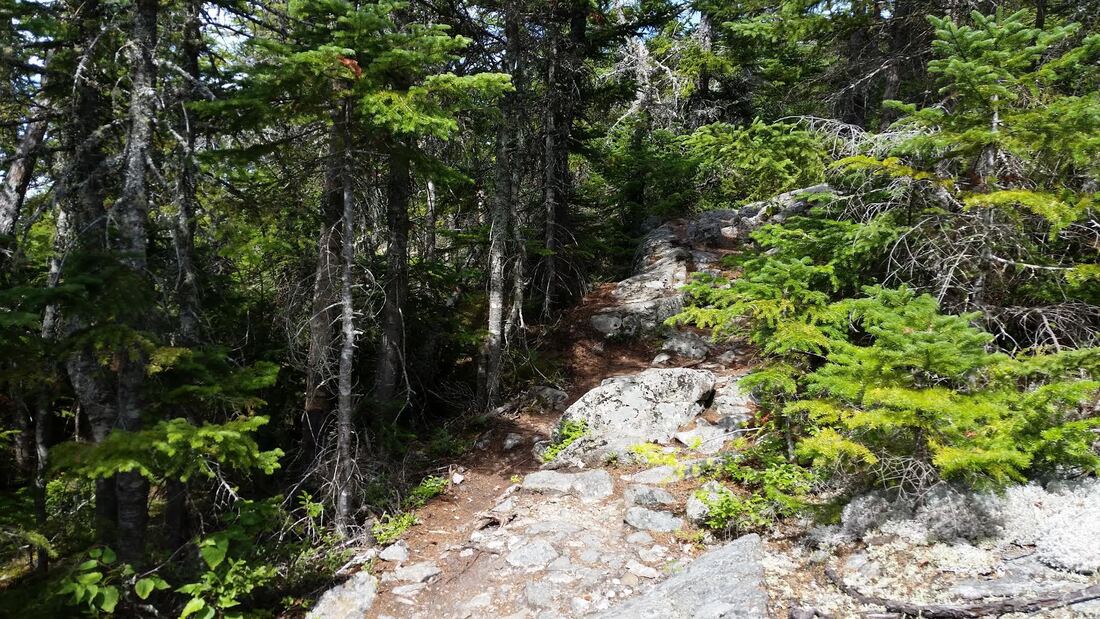
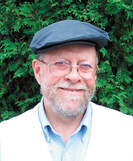

 RSS Feed
RSS Feed
